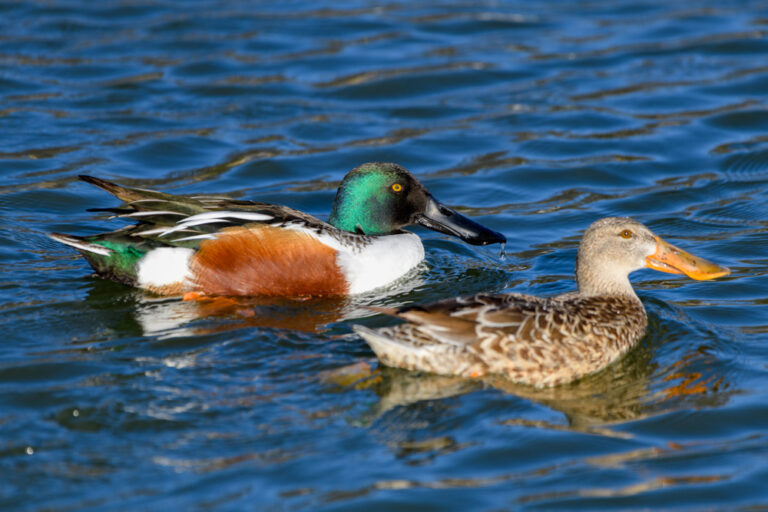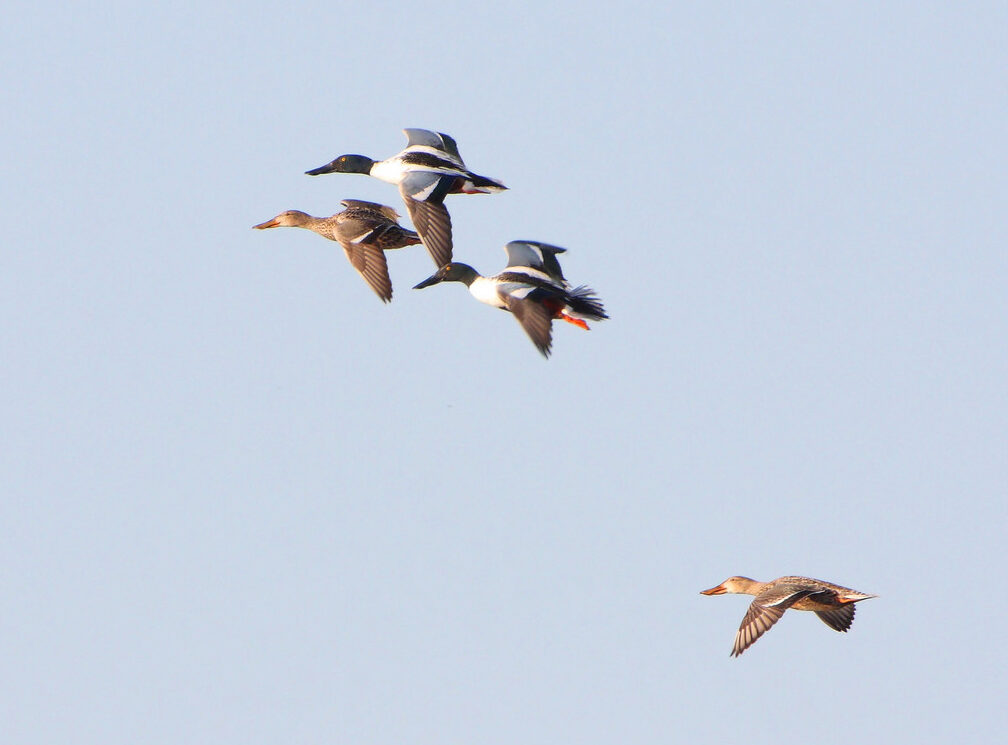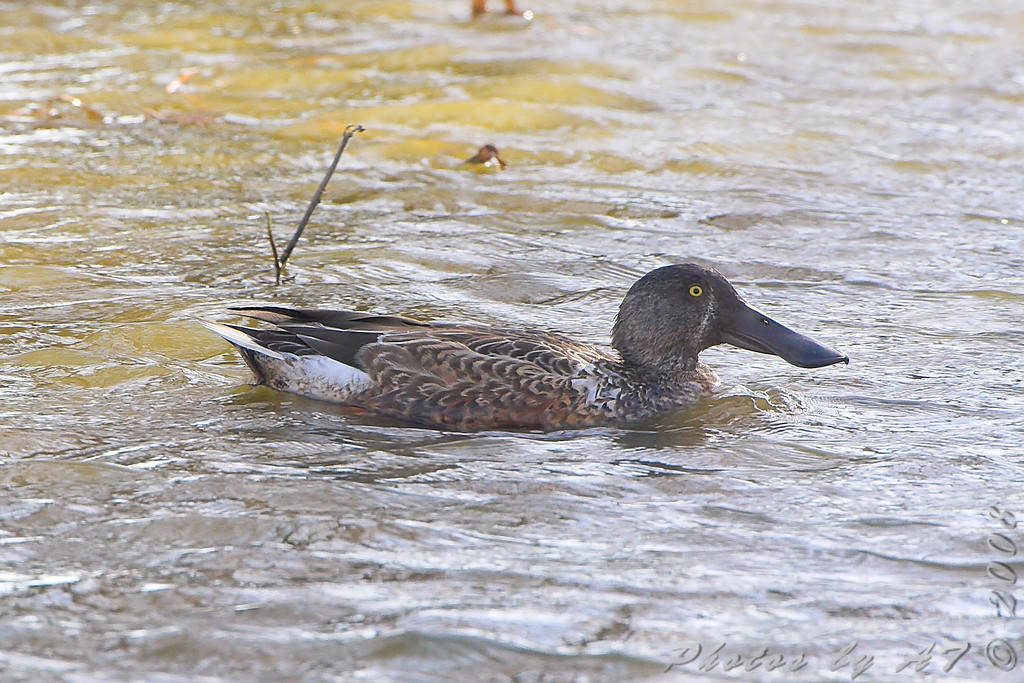
Northern Shoveler, Spatula clypeata
Bill Rowe
The unusual-looking Northern Shoveler is a common sight throughout its very wide breeding range, which encompasses northern and western North America plus much of northern and central Eurasia, and also on its wintering range from the southern U.S. to northernmost South America and across southern Asia and parts of Africa. Thus it is truly a cosmopolitan duck, found on five continents, and may come as something of a relief to the traveling birder who is learning a ton of new species and is glad to see a few easily-identified “old friends” among the waterfowl. The shoveler’s remarkable bill may not be the most attractive adaptation, to our eye, but it allows the bird to feed efficiently on small aquatic animal life (insects, crustaceans, mollusks) by simply paddling around with its head under water, straining out the prey items as it goes. You can often see flotillas of shovelers feeding together in this way, seemingly headless. The name “Northern” is meant to separate ours from three other kinds of shovelers, all far away in Africa, Australia, and southern South America, while up here in this hemisphere there are no others. Several other ducks, all of them known as “teal,” have recently been placed in the genus Spatula along with the shovelers; this includes our North American Blue-winged and Cinnamon Teal (but not the Green-winged Teal, which remains in the genus Anas with the Mallard). One clue to this relationship is the large blue shoulder patches that male shovelers display in flight, just like Blue-wings and Cinnamons.
IDENTIFICATION: Generally easy with a decent view. A medium-sized duck, larger than teal and smaller than Mallards, identifiable both in flight and at rest by the huge bill. Males in breeding plumage are strikingly patterned with dark green heads, white breasts, and brown sides that stand out at a great distance, enabling you to pick out many shovelers even when the bills aren’t visible. The bill is especially useful for females and in fall, when the males are in duller plumage, sometimes with a white crescent on the face. In flight, males have powder-blue shoulder patches, females grayer ones.
ST. LOUIS STATUS: Very common on migration, less so (but usually still around) in winter, and absent only June-July. In spring, shovelers tend to peak in late March and April, and they show up again in late August along with a few other early duck species and continue through the fall.
Learn more and listen to the calls of Northern Shovelers here.


Shovelers in flight: bills leave no doubt
Photo Credit: Al Smith
Male in fall; note thin white facial crescent




